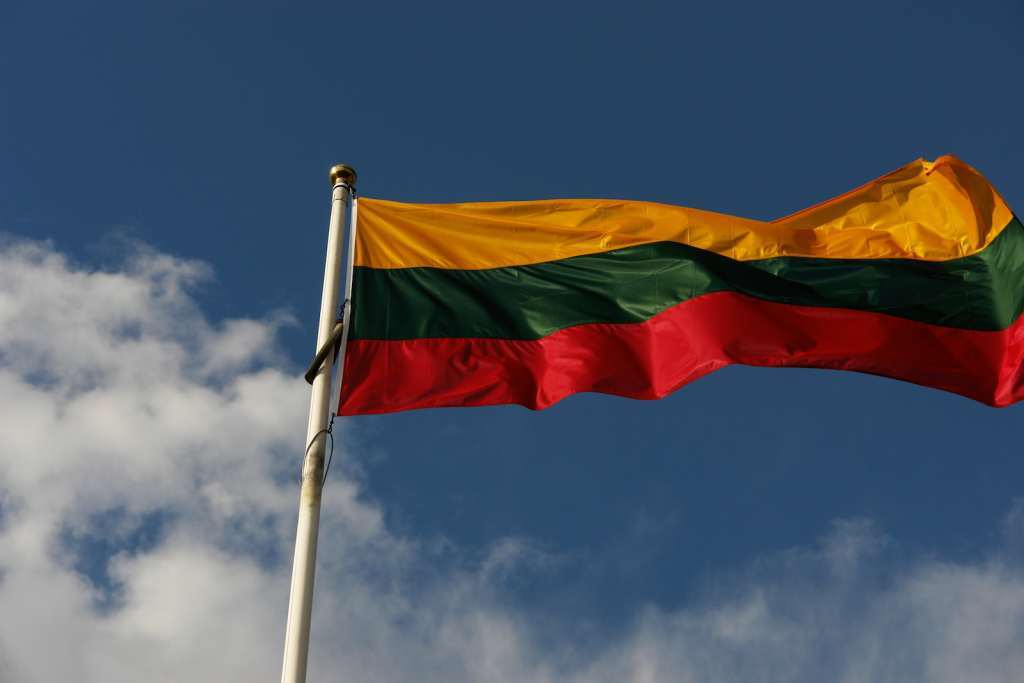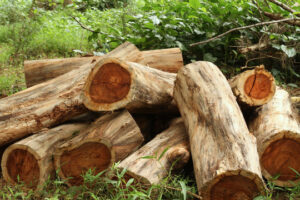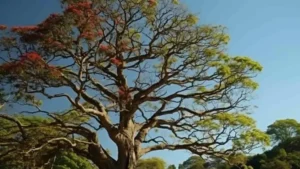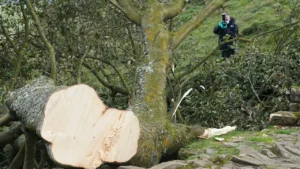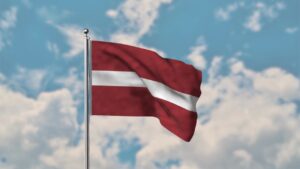Tree Removal in Lithuania: Laws, Permits, Applications & Costs
When planning property improvements or addressing safety concerns in Lithuania, understanding the complexities of tree removal is essential. Lithuania’s lush forests cover approximately 33% of its territory, making tree management both environmentally significant and legally regulated. Whether you’re a property owner, developer, or simply concerned about trees on your land, navigating Lithuania’s tree removal regulations requires specific knowledge and preparation.
Understanding Lithuania’s Tree Protection Laws
Lithuania maintains strict environmental protection laws regarding trees, reflecting the country’s commitment to preserving its natural resources. The forest coverage in Lithuania has steadily increased over recent decades, demonstrating the effectiveness of these conservation efforts.
The Legal Framework
Lithuania’s forest and tree management falls primarily under the Ministry of Environment (Aplinkos ministerija). The primary legislation governing tree removal includes:
- The Law on Environmental Protection
- The Law on Protected Areas
- The Law on Forests
- Municipal regulations specific to each region
These laws collectively establish a framework that classifies trees based on their location, species, size, and ecological importance. Lithuania categorizes trees into several protection levels, with the highest protection reserved for trees in protected areas, trees of cultural or historical significance, and rare or endangered species.
You should understand that removing trees without proper authorization can result in significant penalties, including fines ranging from €100 to €1,000 for individual trees, with higher fines for protected species or trees in conservation areas. In severe cases, criminal charges may apply if the environmental damage is substantial.
Protected Tree Species
When considering tree removal, you must first determine if the tree belongs to a protected species. Lithuania has designated several native tree species as protected, including:
- Ancient oaks (Quercus robur) exceeding certain diameter thresholds
- European yew (Taxus baccata)
- Wild service tree (Sorbus torminalis)
- Black poplar (Populus nigra)
- Certain rare maple and elm species
Removing these protected species typically requires extensive documentation and may be approved only in exceptional circumstances, such as when the tree poses an immediate safety hazard.
Permit Requirements for Tree Removal
Almost all tree removal activities in Lithuania require a permit. The specific requirements vary depending on several factors.
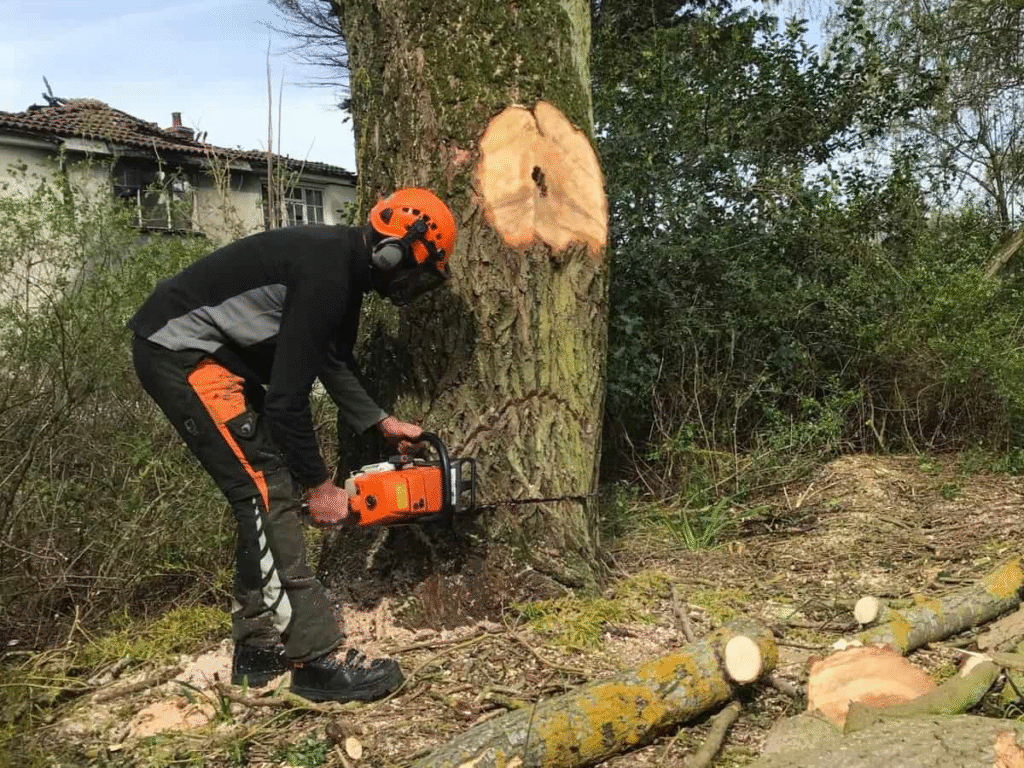
When You Need a Permit
You’ll need to obtain a permit for tree removal in Lithuania under the following circumstances:
When removing trees on private property with a trunk diameter exceeding 20 cm (measured at 1.3 meters height) For any tree removal in urban areas When removing multiple trees that may impact local biodiversity For trees located in protected areas or ecological corridors When removing trees in historical or cultural sites
Only in limited emergency situations, such as when a tree poses an immediate danger to public safety (e.g., after storm damage), can you proceed without prior authorization. However, even in these cases, you must notify the relevant authorities after the fact and provide evidence of the emergency.
Exemptions from Permit Requirements
You may be exempt from obtaining a permit in certain situations:
When removing fruit trees on private property For trees with a trunk diameter less than 20 cm (at 1.3 meters height) When removing trees that were planted less than 10 years ago and weren’t part of a landscaping requirement For non-native invasive species identified in Lithuania’s Invasive Species List
Even with these exemptions, it’s advisable to confirm with your local environmental department before proceeding with any tree removal.
The Permit Application Process
Obtaining a tree removal permit in Lithuania involves a multi-step process that typically takes between 2-6 weeks, depending on the complexity of your request and the location of the trees.
Required Documentation
To apply for a tree removal permit, you’ll need to prepare:
- A completed application form (available from your local municipal office or environmental department)
- Proof of property ownership or written consent from the property owner
- Site plan showing the location of trees to be removed
- Photographs of the trees
- Statement explaining the reason for removal
- Arborist assessment (for larger projects or trees of potential significance)
- Proposed replanting plan (often required as a condition of approval)
You can access official application forms and additional guidance through the Lithuanian Environmental Protection Department’s website at https://am.lrv.lt/ (the official government portal for environmental matters).
Application Submission and Review
Submit your completed application to the environmental department of your local municipality. The review process typically involves:
- Initial assessment of your application for completeness
- Site inspection by environmental officials
- Evaluation of the tree’s health, significance, and the validity of removal reasons
- Public notification (for significant cases or trees in public areas)
- Decision issuance
During the review process, authorities may request additional information or modifications to your plans. In some cases, especially for trees in urban settings or protected areas, a public comment period may be required before a decision is made.
Permit Approval Conditions
When your permit is approved, it typically comes with specific conditions, such as:
- A timeline for when removal must occur
- Requirements for tree replacement or compensatory planting
- Specifications for how the removal should be conducted
- Requirements for stump removal or treatment
- Provisions for protecting surrounding vegetation during removal
You should carefully review these conditions, as failing to comply could result in penalties or the invalidation of your permit.
Tree Removal Costs in Lithuania
The costs associated with tree removal in Lithuania include both permitting fees and the actual removal expenses.
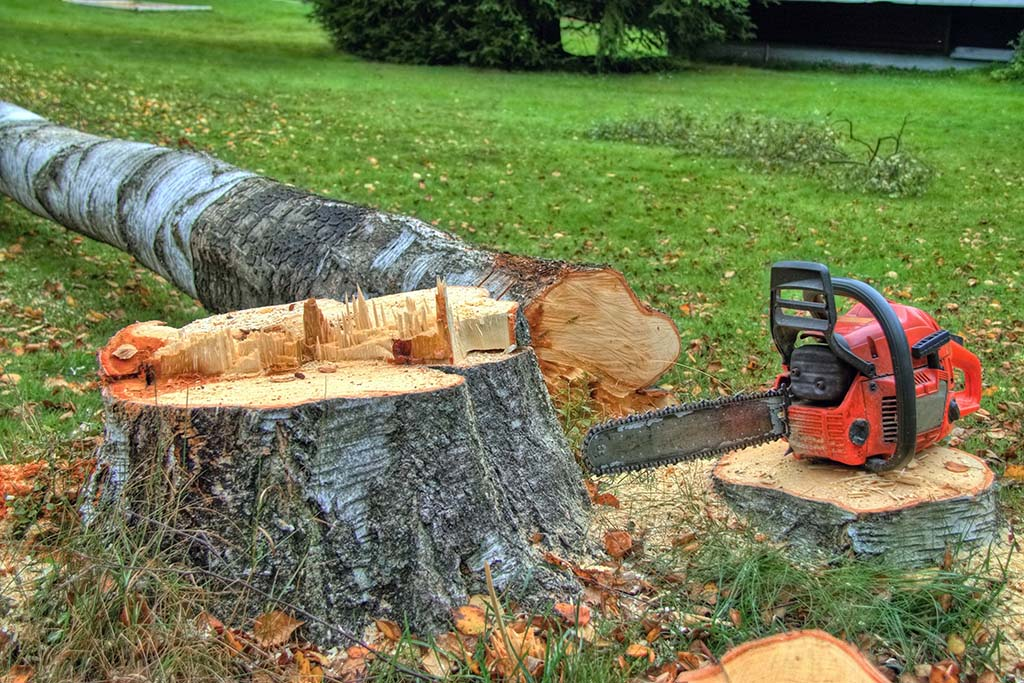
Permit Fees
Permit costs vary based on the location, number of trees, and purpose of removal. The following table provides an overview of typical permit fees:
| Type of Application | Basic Fee (€) | Additional Fees |
|---|---|---|
| Residential (1-3 trees) | 30-50 | None |
| Residential (4+ trees) | 50-100 | €10 per additional tree |
| Commercial property | 100-200 | Assessment fee of €50-150 |
| Protected areas | 150-300 | Ecological impact assessment €200-500 |
| Emergency removal | 50 | After-the-fact documentation €75 |
Municipal administrations may adjust these fees based on local regulations. Some municipalities offer reduced fees for pensioners or for removals related to disease control.
Professional Removal Services
Once you’ve obtained your permit, you’ll need to consider the cost of actual tree removal. Professional tree removal services in Lithuania typically charge based on:
- Tree size (height and diameter)
- Accessibility of the tree
- Complexity of the removal
- Additional services (stump grinding, wood disposal, etc.)
For standard residential tree removal, costs typically range from:
- Small trees (under 5m): €100-300
- Medium trees (5-10m): €300-600
- Large trees (10-20m): €600-1,200
- Very large trees (20m+): €1,200-2,500+
These prices may increase by 30-50% if the tree is in a difficult location, requires specialized equipment, or if there are risk factors such as proximity to buildings or power lines.
Cost-Saving Considerations
To manage tree removal costs effectively, you should:
Consider timing your removal during the off-season (late fall to early spring), when many tree services offer discounted rates.
Obtain multiple quotes from different service providers, as prices can vary significantly.
Inquire about wood salvage options—some companies will reduce fees if they can sell the timber.
Check if your municipality offers subsidies for removing diseased trees as part of plant health initiatives.
Coordinate with neighbors if multiple properties require tree work, as services often provide discounts for multiple jobs in the same area.
Environmental Considerations and Alternatives
Lithuania’s environmental policies strongly emphasize tree preservation when possible. Before proceeding with removal, you should explore alternatives:
Professional Assessment
Consider hiring a certified arborist to evaluate the tree. What appears to be a problem tree might actually be manageable through:
- Proper pruning to remove dangerous limbs
- Cabling or bracing to support weak structures
- Treatment for diseases or pest infestations
- Root barrier installation to prevent foundation damage
Mitigation Requirements
If removal is unavoidable, most permits will require mitigation measures to offset the environmental impact. These typically include:
- Replanting requirements (usually at a ratio of 2-5 new trees for each mature tree removed)
- Contributions to municipal tree funds
- Participation in local reforestation projects
The specific requirements are calculated based on the size, species, and location of the removed tree. For large-scale removals, you might need to submit a comprehensive landscaping plan showing how you’ll restore the site’s ecological value.
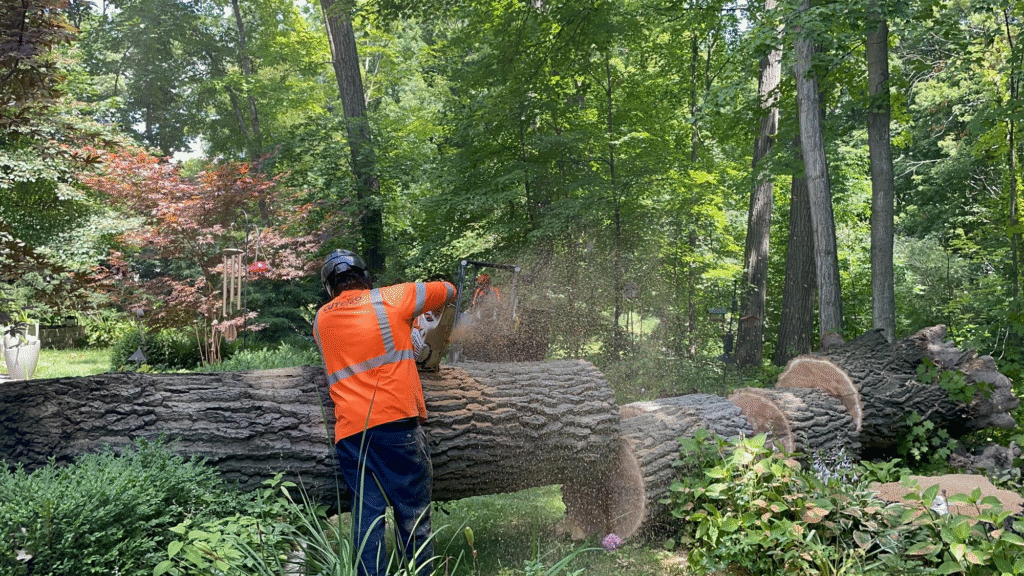
Special Considerations for Different Regions
Tree removal regulations can vary significantly across Lithuania’s different regions and municipalities.
Urban Areas
In major cities like Vilnius, Kaunas, and Klaipėda, tree removal regulations are particularly strict. Urban trees provide critical ecosystem services, including temperature moderation, air purification, and stormwater management.
In these areas, you’ll typically face:
- More stringent permit requirements
- Higher replacement ratios for removed trees
- Greater scrutiny from both officials and the public
- Requirements to consider alternatives to removal
Many urban municipalities maintain detailed tree inventories and have designated certain specimens as “heritage trees” that receive special protection regardless of their location on public or private property.
Rural and Agricultural Areas
In rural settings, regulations focus more on maintaining forest coverage and preventing unauthorized clearing. If your property is classified as forest land or agricultural land with significant tree cover, you’ll need to work with both local authorities and potentially the State Forest Service.
For agricultural land, you might need to demonstrate that tree removal is necessary for legitimate agricultural activities. Converting forested land to other uses typically requires special permission and may involve significant compensation or replacement requirements.
Protected Landscapes
Lithuania has numerous national parks, regional parks, and nature reserves where tree removal is highly restricted. If your property falls within or adjacent to these areas, you’ll face additional layers of review.
In these sensitive areas, permits are often granted only for:
- Removal of invasive species
- Management of diseased trees that threaten forest health
- Limited clearing for approved construction with proper environmental impact assessments
- Safety issues that cannot be mitigated through other means
Enforcement and Penalties
Lithuania takes illegal tree removal seriously, with an effective enforcement system in place.
Monitoring and Inspections
Environmental protection agencies conduct regular inspections, particularly in areas where permits have been issued or where development is occurring. Additionally, Lithuania encourages citizen reporting of suspicious tree removal activities.
Consequences of Non-Compliance
If you remove trees without proper authorization or violate the conditions of your permit, you may face:
- Administrative fines based on the environmental value of the trees
- Requirements to replant at increased ratios (up to 10:1 for illegally removed valuable trees)
- Restoration requirements to return the site to its previous condition
- In severe cases, criminal prosecution with potential imprisonment for significant environmental damage
The environmental value calculation considers the species, age, condition, ecological significance, and location of the illegally removed trees.
Conclusion
Navigating tree removal regulations in Lithuania requires careful planning and respect for the country’s environmental protection framework. By understanding permit requirements, preparing thorough applications, and considering alternatives to removal, you can manage trees on your property legally and responsibly.
Remember that these regulations exist to preserve Lithuania’s forest heritage and the essential ecosystem services that trees provide. When removal is necessary, proper permitting ensures it’s done with minimal environmental impact and appropriate compensation measures.
For the most current information and municipality-specific requirements, always consult with your local environmental department or the Ministry of Environment’s official resources at https://am.lrv.lt/en/ before proceeding with any tree removal project.
